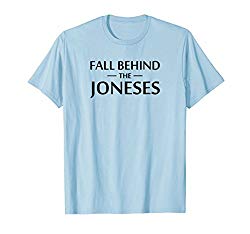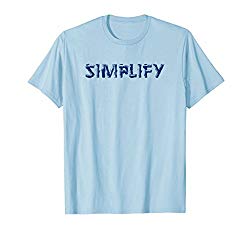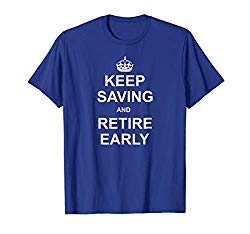Can You Make Way More Somewhere Else?
The Bureau of Labor Statistics (BLS) is the U.S. Federal Agency responsible for measuring and reporting job market activity. This includes unemployment, inflation data, and other key measures. When you hear a CNBC host cite U.S. unemployment figures, those numbers are coming from the BLS.
And if you haven’t been paying attention, things have been going well.
Your federal tax money funds what the BLS does, so you might as well take advantage of the resources they provide. One of their best resources is the Occupational Employment Statistics map, or OES map. The BLS OES map serves up valuable data about jobs and salaries in a simple mapping interface.
For a financial independence seeker who’s looking to make a geographic move or to make more money, this resource is invaluable.
To see data about a particular industry, just pick the proper category in the “Major Occupational Group” pull-down menu.
Then find the more detailed job titles in the “Occupation” pull-down menu.
Next is the “Measure” pull-down menu. Here you have three main choices.
- Employment
- Location quotient
- Annual mean wage
And you can choose these three options either by state or by MSA. What is MSA? MSA stands for “Metropolitan Statistical Area”.
Wikipedia does a great job of explaining it but basically they’re not counties, incorporated cities, or even Census blocks. MSAs are areas with common economic ties. For instance, Washington D.C. and Baltimore are close geographically and the cities themselves are of similar population, but since D.C. is an economic juggernaut compared to Baltimore, some of the Baltimore suburbs are actually grouped with D.C. for MSA purposes.
Your next question might be “Hey Dave, this stuff is dorky, what is a location quotient?”
A Location Quotient is a measure of the prevalence of an occupation in an area relative to the U.S. average.
So if a certain state or MSA has twice the number of doctors than the national average per capita, it would have a higher location quotient.
Example
Here’s an example. To find data for teachers, I chose…
- “Education, training, and library” in the first pull-down.
- “Teachers and instructors, all other, except substitute teachers” in the next pull-down (I know, they have a weird way of categorizing their data…).
- “Annual mean wage by MSA” in the last pull-down.
That combination will yield a map of mean teacher salaries by MSA in America. It looks like this:
A nifty thing about the map is that no matter which measure category you pick, when you hover your mouse over a state or MSA it shows the values for all the other choices. I hovered the mouse over the Memphis, TN MSA. Apparently teachers do really well there as compared to the national average, having a mean salary close to $70,000 per year.
And the cost of living is pretty low, just sayin….
As you can see above, the map also shows a breakdown of salaries by percentiles when you hover over an MSA. In this case the picture above shows that 10% of teachers in the Memphis MSA make more than $105,860 annually.
Additionally, the map calculates employment per 1000 people for any particular occupation. That measure can help you find areas with possible shortages in a certain profession.
Geoarbitrage
Go ahead and kick the tires on the OES map. If you plan on using geoarbitrage in your financial independence strategy, or if you just don’t like where you live anymore and want to make a move, the OES map is a tremendous tool.
You can find areas that pay above the mean in your occupation, as well as areas that have shortages of workers in your profession relative to others.
I’ve done lots of other geographic-based posts showing various aspects of money and finance from a location perspective. Be sure to check out my Geoarbitrage Resources Page that has tons of great tools to help you find your perfect location.
I hope you find these resources handy and I will continue to expose valuable tools that can help when deciding on a geoarbitrage strategy.
















































Another great resource to have. I lucked my way into my current situation and because of it really won the geoarbitrage game in terms of cost of living and salary (it is often better to be lucky than good)
Thanks Doc!
i’m really hoping this is my last job where i need this degree. i want the next earned income to be for something i enjoy more like working at the muffurito bar.
Is that called being a “muffarista”?
muffmaster, muffarista, whatever it takes. it’s no harder than passing out towels.
You share the best dang maps.
My Feedly stream is pretty dorky 🙂
The “all others” bit in “teachers and instructors, all others, except substitute teachers” roused my curiosity about other categories of teachers. I found kindergarten, elementary, middle school, high school (secondary), several post secondary (college), special education, and others. The “all others” category seems to be a catch all for people who aren’t teaching in typical schools and colleges. Perhaps that’s the category for people who teach workshops and coding boot camps?
Interesting map, although I wish it included ranges as well as averages. I looked at my own profession and MSA. The average is about right for someone with 15 years experience with minimal supervisory responsibilities. I make substantially more, as I have experience and supervise. My most recent hire, in her first professional position, makes much less. I’d like to see maps or infographics that help people explore the range of salaries within professions, so entry level people would have more realistic salary expectations. It would also help me coach employees if they could see the factors that correlate with higher salaries; it’s amazing how few people realize that developing project management or supervisory or data analysis skills will help them advance professionally.
I agree, some of the categories are not clear. But as you point out there are teachers in a lot of different capacities. Thanks for stopping by!